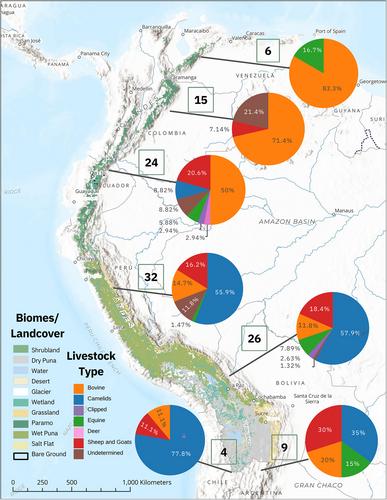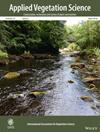Pastoralism in the high tropical Andes: A review of the effect of grazing intensity on plant diversity and ecosystem services
Abstract
Aims
Pastoralism is a land-use system that involves the care and use of grazing livestock and has been more common in areas of low resource availability. In this review, we analyze the impact of pastoralism on biodiversity and ecosystem services across the tropical Andes. This region is the most extensive and populated tropical mountain region in the world and presents a high diversity of biomes, livestock types and management histories. Given that pastoralism is a main land use here, understanding its impacts is important for providing appropriate recommendations for sustainable management.
Location
Tropical Andes; Venezuela to the north of Argentina and Chile.
Methods
To understand these impacts, we performed a systematic literature search (August 2021) and obtained 103 articles. We created a conceptual framework to map how available research has contributed to our understanding of the main pastoral systems, their associated management strategies and the impact of different grazing intensities on vegetation cover/diversity and ecosystem services.
Results
We found that research has focused on two leading pastoral systems in the region: bovines in the páramo biome of the northern Andes and camelids in the puna biome of the central Andes. We found important environmental impacts at high grazing intensities for both the puna camelid and páramo bovine pastoral systems, including a decrease in soil organic carbon and an increase in soil compaction, a decrease in above-ground biomass, plant species richness, and graminoid cover, as well as clear changes in the growth-form composition of vegetation.
Conclusions
Given these findings, we recommend coordinated research efforts using common methodologies, documenting current and previous land use, including stocking rates, and combining observational and experimental approaches to develop a more integrated understanding of pastoralism's impacts across this diverse and vulnerable region.


 求助内容:
求助内容: 应助结果提醒方式:
应助结果提醒方式:


